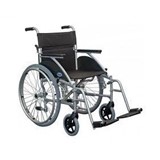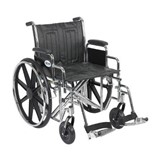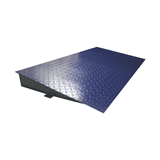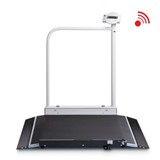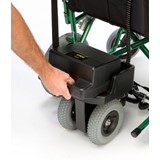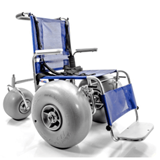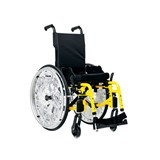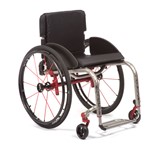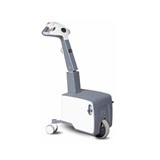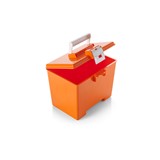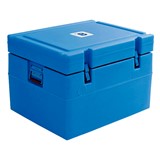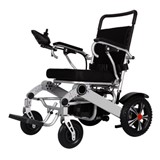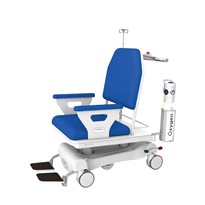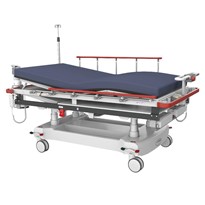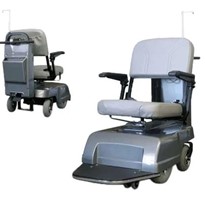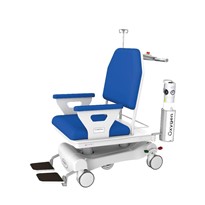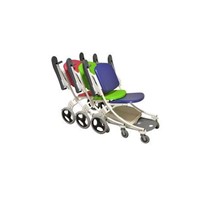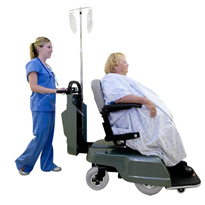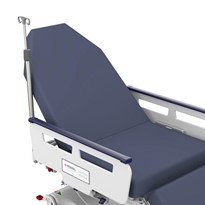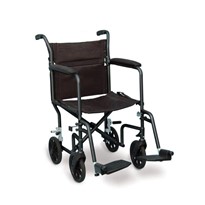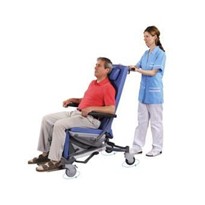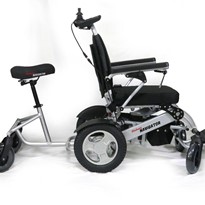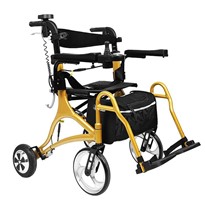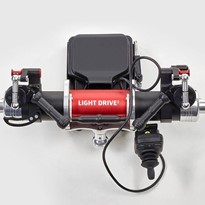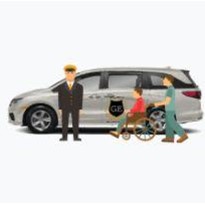What’s the difference and how do I decide which is best for me? Well, at the end of the day the choice will always be yours!
However, below is an unbiased comparison of these three transport options, including the pros and cons of each, hopefully this helps you make a decision on which option could be best for your facility and staff.
Wheelchair Advantages
Moving & Handling
Anyone can use a wheelchair with minimal training required. The lightweight design of the wheelchair itself without a patient is very easy to move.
Price
Wheelchairs are generally cheaper to purchase, prices can start as low as $200 up to $500 and some more expensive ones can be over $1000.
Maintenance
The simple lightweight design of a wheelchair usually means it's prone to breakdowns however, is usually easy and low cost to repair. Standard wheelchairs can also fold to make transporting and storage easier.
Wheelchair Disadvantages
Customisation
Standard wheelchairs offer very minimal optional features and customisation beyond some standard accessories and are more suitable for smooth level flooring.
Manoeuvrability
With added weight, wheelchairs get heavy and hard to manoeuvre, which could make moving around a facility somewhat difficult creating more effort for carers. A wheelchair is also not comfortable for patients who require to be transported for longer periods of time, increased shear injuries can be caused because of the frame rigidity.
Accessibility
Due to their smaller size, wheelchairs can make access to a patient more challenging. The average safe working load of a wheelchair is 100-150kg. As they are so easy to store and transport in a car this can give patients or partners the opportunity to take off site when they leave.
Transport Chair Advantages
Moving & Handling
Built to transport patients over longer distances, transport chairs are built with better outdoor wheel systems and also have built in features to support patients such as; patient belonging holders, IV poles, etc. The chairs have a very clinical design to compliment these features.
Mechanics
Depending on the model, transport chairs can offer patients comfort, suitability and ease of use by any operator and have a higher weight capacity of at least 200kg. The chairs can also be easier to use with specialised braking systems and nesting stacking for easier storage.
Cost
Although transport chairs can be typically more expensive than a wheelchair, they are generally still affordable for the clinical benefits that they can provide. Transport chairs can start anywhere from $1,000 to $3,000.
Transport Chair Disadvantages
Effort Required
Transferring patients of size can be more difficult in a transport chair given the smaller seat size and the amount of manual effort that is required to push the patient, as these chairs can become difficult to move with more weight.
Adaptability
Some health conditions are not suitable for a standard transport chair and a specialised patient positioning chair might need to be used to assure that your patients are receiving the best care possible. Patients should be assessed as to the most appropriate chair for their transport.
Customisation
Due to the more complex design of transport chairs, most models are available in standard design and features with limited ability to tailor the product to suit your facilities requirements.
Power Drive Chair Advantages
Ease of Use
Power assisted chairs can drastically reduce manual handling risks for staff and patients, with an intelligent system designed to respond to the least amount of effort. Due to powered assistance, the size of the unit typically can be larger which accommodates for patients of size.
Environment
Suitable for both indoor and outdoor use, most power drive chairs can be taken onto any terrain and when fully charged the chairs are said to last up to 15km. On some units the seating cushions can be completely removed to assist in easy cleaning for infection control standards and maintenance.
Manoeuvrability
Powered drive chairs offer the ability to move patients of any size from forwards and backwards with minimal effort regardless of steep slopes or tight corners. The safe working load of a power assisted transport chair can be over 300kg. The chairs may also offer support for the patients with foldable footplates and a place to store belongings.
Powered Drive Chair Disadvantages
Cost
You can expect to pay more for an intelligent transport chair than your standard wheelchair. Prices can range anywhere up to $12,000 depending on the model and level of power drive sophistication.
Training
Like any piece of equipment that has more technology and manual handling/operation involved with operating the chair some training is going to be needed for staff. Will this cost anything? More than likely not just the time of your staff.
Storage
Due to the larger overall size of power drive chairs, the units could be more challenging to store in smaller facilities with limited space.
Quick Assessment
Wheelchairs are usually a good fit if
- You only have a budget for a low cost item
- You want low cost maintenance
- You only require a short-term transport option for patients
Transport Chairs are usually a good fit if
- You don’t require a custom solution
- You are happy with a smaller chair size
- You are looking for a more clinically developed product
Power Drive Chairs are usually a good fit if
- Your facility invests in their staff and patients safety
- You are transferring patients indoors and outdoors over longer distances.
- You need a larger chair that caters for all patients of size.



-160x160-state_article-rel-cat.jpg)
